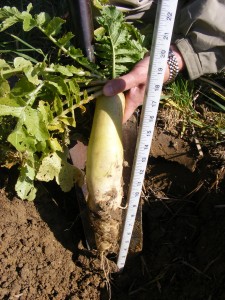
Cover crop radishes are “all the buzz” these days in the cover crop world. Cover crop radishes should have fairly large tubers that penetrate the soil and add many benefits. The main benefits are that they enhance percolation and aeration. Additionally they provide food for earthworms like few other cover crops. It is quite common to find 3-5 earthworms per tuber.
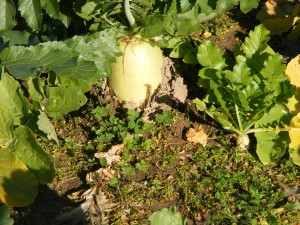
The question that many producers and researchers are asking is “how big” do the radishes need to be to be effective? My friend Barry Fisher, NRCS Agronomist in Indiana, leans towards several smaller tubers being better than the “State Fair” type that may be confused for a baseball bat! While the larger tubers make newspaper ads and are great for photo ops, I’m not convinced that they are necessary. On the other hand, the larger tubers do a better job of “lifting” the soil around them. It is not uncommon to find soil built up around the larger tubers at least 1/2″. (See photo)
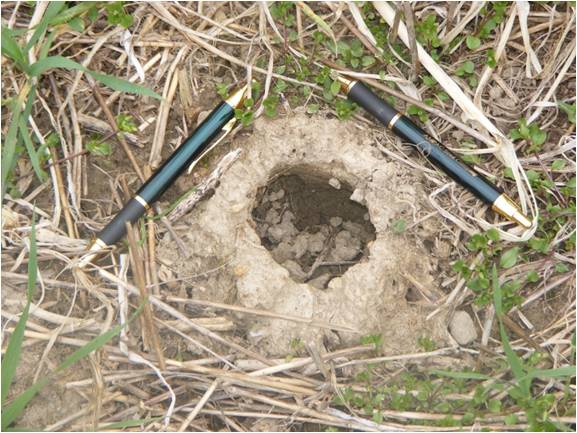
Cover crop radishes scavenge nitrogen and other nutrients from the soil. To achieve the larger tubers it is important to have good fertility like manure or a legume planted with the radishes. If there are few nutrients to scavenge, the radishes will rarely become very large.
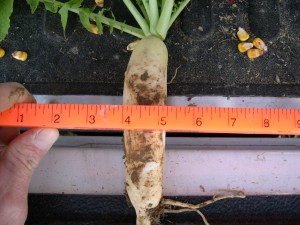
The main benefits of cover crop radishes
Cover crop radishes:
- scavenge nutrients from the soil (especially nitrogen).
- penetrate the soil, therefore reducing compaction.
- enhance soil percolation and aeration.
- provide an excellent environment for earthworms.
- provide deer and cattle an excellent wintertime feed.
- die in the winter (around 25-29 degrees).
Cover crop radishes may also:
- increase yields on corn by as much as 9-10 bu/acre (recorded in central Indiana).
- reduce soybean cyst nematode populations.
- improve control of winter annual weeds (this is usually the case).
When planting cover crop radishes:
- Drill 1-3# or broadcast 3-5#/acre for larger tubers.
- Drill 3-5 or broadcast 6-10#/acre for more, smaller tubers.
- Use improved selections (varieties) for more consistent results.
The main detriments of cover crops radishes
Cover crop radishes:
- stink when they deteriorate!
- may head out if you plant them too early in the summer. A late-summer planting (August-September) works best.
- need 6-10 weeks of growth for best results.
- may contain hard seed, which when sown in the late-summer, may germinate in the spring.
- may develop very deep roots in very sandy soil…which may get into field tiles…even 32″ deep tiles
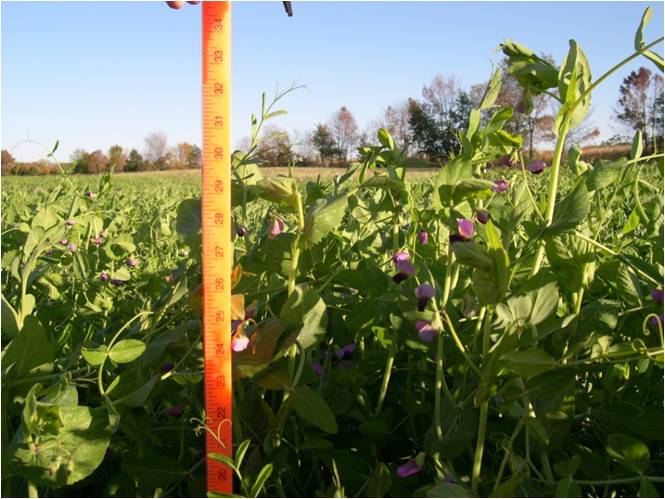
Pingback: bokashicomposting.com - Short Cover Crops Put Down Deep Roots